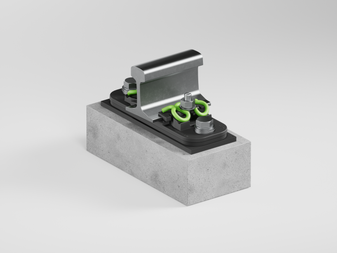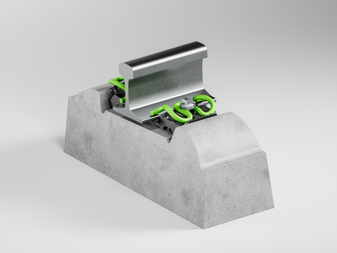When maximum loads occur and line availability is a top priority, slab track is the modern alternative of choice. Unlike ballasted track, it does not use a loose track bed and thus does not benefit from the natural elasticity of the ballast. Instead, the rails are fixed directly to a concrete slab or precast support points. This stable construction ensures a permanently precise track position, also ensuring a reduction in maintenance costs.
The advantages of slab track are particularly evident on heavily loaded and difficult-to-access sections of track. It is more durable, requires less maintenance and significantly reduces life cycle costs. At the same time, it offers maximum precision, even under extreme climatic conditions or on tight curves.
This stability nevertheless poses new challenges. Every force generated by train operation has a direct impact on the rail and the substructure. Notably in high-speed traffic, in tunnels, on bridges or on sections of track that are difficult to access, fastening systems must compensate for the lack of elasticity. This is the only way to cope with high axle loads and extreme speeds without damaging the material.
Special solutions, such as the MFlex fastening system, provide the necessary elasticity on slab tracks. These compensate for vibrations, reduce structure-borne noise and distribute loads evenly, so that high speeds and axle loads can also be reliably managed here.
Vossloh offers fastening systems specially developed for the requirements of slab tracks, which combine maximum stability with the necessary elasticity and can be individually configured in accordance with the project conditions.
_(1).jpg?format=webp&quality=85&crop=1787,2001,x607,y0&width=412)


.jpg?format=webp&quality=85&crop=2409,2409,x0,y602&width=60)